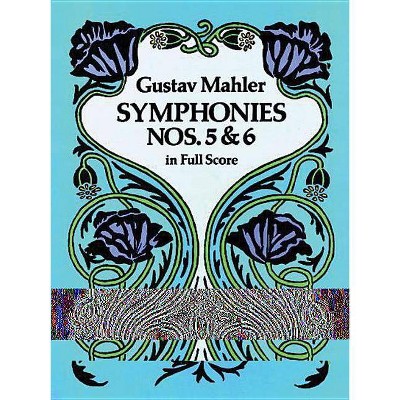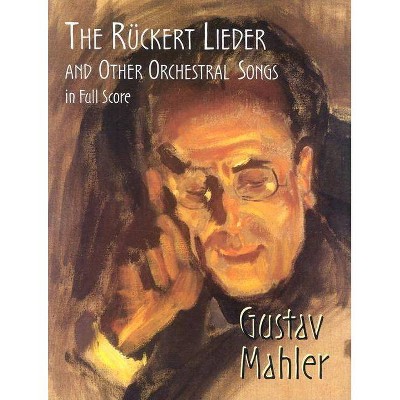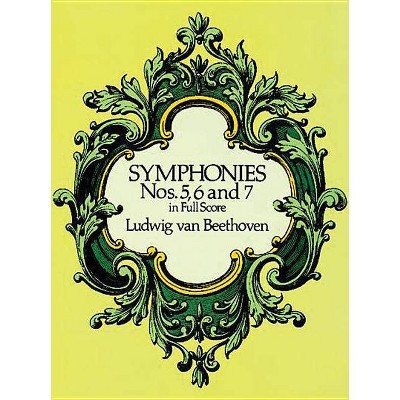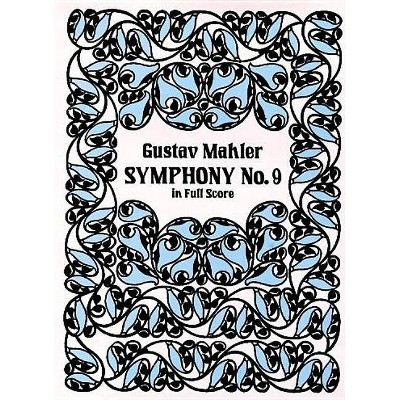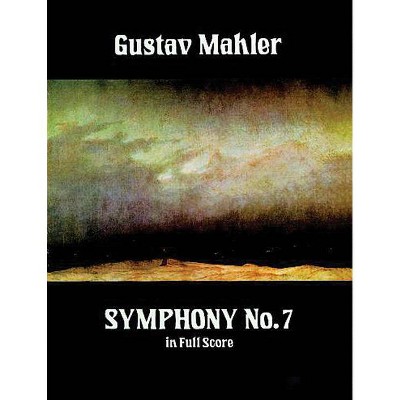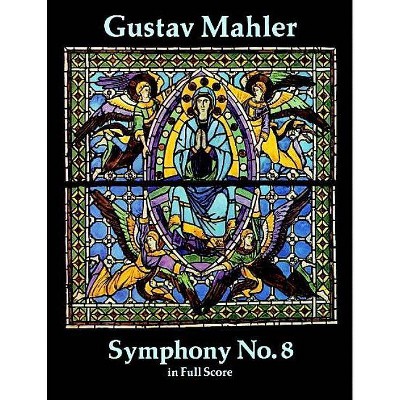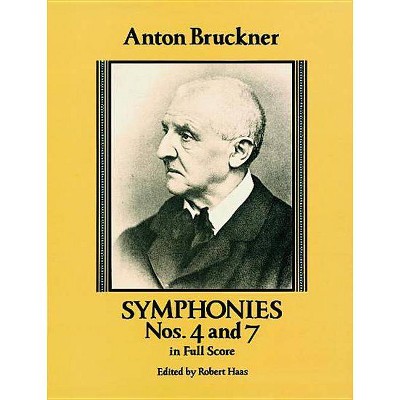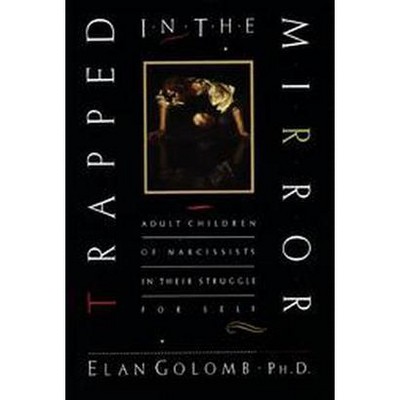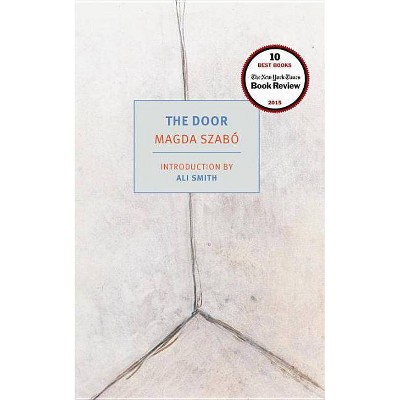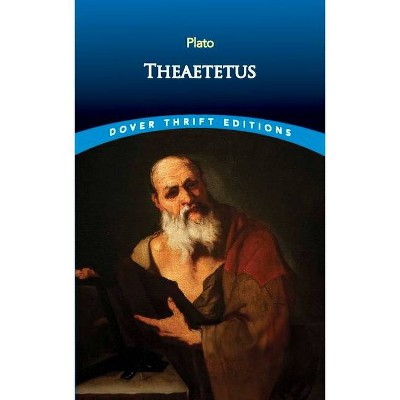Symphonies Nos. 1 and 2 in Full Score - (Dover Orchestral Scores) by Gustav Mahler (Sheet music)
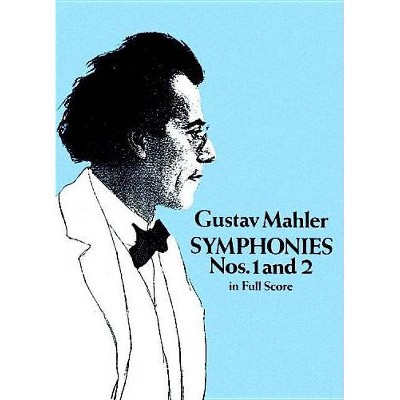
Similar Products
Products of same category from the store
AllProduct info
<p/><br></br><p><b> About the Book </b></p></br></br>Handsome, inexpensive volume reproduces authoritative Austrian editions of the Symphony No. 1 in D Major (<i>Titan</i>) and Symphony No. 2 in C Minor (<i>Resurrection</i>).<p/><br></br><p><b> Book Synopsis </b></p></br></br><p>Often regarded as the last great composer in the Austro-Germanic tradition, Gustave Mahler (1860-1911) exerted a major influence on 20th-century music; his later work in particular affected the musical ideas of such composers as Arnold Schoenberg, Dimitri Shostakovich, Alban Berg, and Benjamin Britten.<br>While his mature work foreshadowed radical elements of modern music -- particularly the dissolution of tonality -- Mahler's first symphonies were written in a relatively traditional programmatic style with a strong spiritual element. These early works are seen by some critics as attempting to establish some ultimate ground for existence in the face of pain, death, doubt, and despair. The composer's spiritual quest, as well as the vivid orchestration, innovative symphonic structure, and rich emotional expression that characterized his music can be clearly studied and appreciated in this volume, which contains complete scores of Mahler's first two symphonies.<br>Of the <i>Symphony No. 1 in D Major</i> (Titan), the <i>Encyclopaedia Britannica</i> notes, The program of the purely orchestral <i>Symphony No. 1 in D Major </i>... is autobiographical of his youth; the joy of life becomes clouded over by an obsession with death in the macabre Funeral March in the Manner of Callot (basically a parody of popular music), which is eventually routed in the arduous and brilliant finale.<br>Of <i>Symphony No. 1 in C Minor</i>, (Resurrection), <i>Grove's Dictionary of Music and Musicians</i> states: Symphony II is a good example of all Mahler's works ... scored nearly always heavily for a large orchestra, restless and stormy in places, monumentally exalted in others.<br>Now both works are available in this handsome, inexpensive edition, reproduced directly from the original editions published by Josef Weinberger in Vienna in 1897 and 1899. Beautifully printed with wide margins and clear noteheads, this edition of the symphonies offers an unparalleled resource for studying and enjoying the seminal works of a modern master. <p/></p><p/><br></br><p><b> From the Back Cover </b></p></br></br>Often regarded as the last great composer in the Austro-Germanic tradition, Gustave Mahler (1860-1911) exerted a major influence on 20th-century music; his later work in particular affected the musical ideas of such composers as Arnold Schoenberg, Dimitri Shostakovich, Alban Berg, and Benjamin Britten.<br>While his mature work foreshadowed radical elements of modern music--particularly the dissolution of tonality--Mahler's first symphonies were written in a relatively traditional programmatic style with a strong spiritual element. These early works are seen by some critics as attempting to "establish some ultimate ground for existence in the face of pain, death, doubt, and despair." The composer's spiritual quest, as well as the vivid orchestration, innovative symphonic structure, and rich emotional expression that characterized his music can be clearly studied and appreciated in this volume, which contains complete scores of Mahler's first two symphonies.<br>Of the <i>Symphony No. 1 in D Major</i> ("Titan"), the <i>Encyclopaedia Britannica</i> notes, "The program of the purely orchestral <i>Symphony No. 1 in D Major </i>... is autobiographical of his youth; the joy of life becomes clouded over by an obsession with death in the macabre "Funeral March in the Manner of Callot (basically a parody of popular music), which is eventually routed in the arduous and brilliant finale."<br>Of <i>Symphony No. 1 in C Minor</i>, ("Resurrection"), <i>Grove's Dictionary of Music and Musicians</i> states: "Symphony II is a good example of all Mahler's works ... scored nearly always heavily for a large orchestra, restless and stormy in places, monumentally exalted in others."<br>Now both works are available in this handsome, inexpensive edition, reproduced directly from the original editions published by Josef Weinberger in Vienna in 1897 and 1899. Beautifully printed with wide margins and clear noteheads, this edition of the symphonies offers an unparalleled resource for studying and enjoying the seminal works of a modern master.<br><p/><br></br><p><b> About the Author </b></p></br></br>Austrian composer and conductor Gustav Mahler (1860-1911) wrote chiefly symphonies and <i>Lieder. </i>Late Romantic in style, his tempestuous works reflect the anxious mood of Europe at the turn of the 20th century. Because of his Jewish roots, the composer's music was suppressed by the Nazis but has enjoyed a steady revival over the past five decades.
Price History
Cheapest price in the interval: 16.79 on March 10, 2021
Most expensive price in the interval: 20.99 on November 8, 2021
Price Archive shows prices from various stores, lets you see history and find the cheapest. There is no actual sale on the website. For all support, inquiry and suggestion messages communication@pricearchive.us
